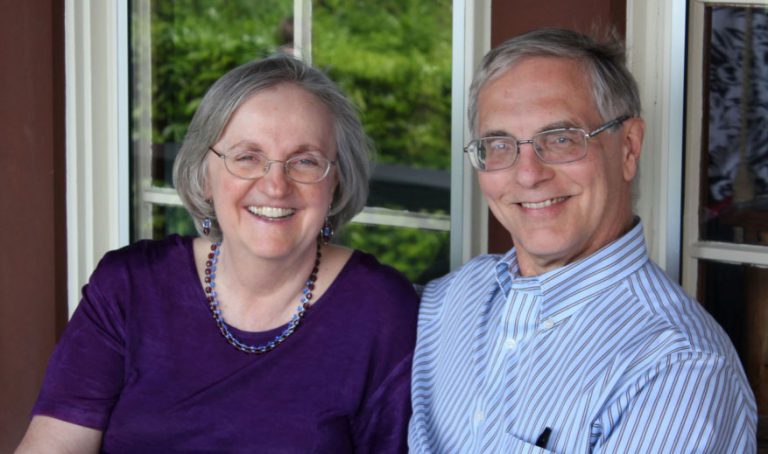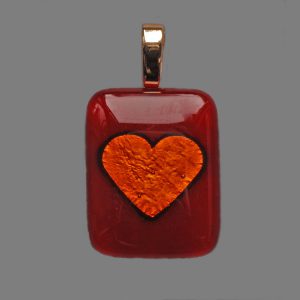About Us
Eva McGinnis, a teacher and poet, combines the glass beads into original designs. The pieces are all as unique as her poems. “I love the play of light in each bead and I fill it with a vibration of love to be shared with the person who wears it.” She has been beading and wire-working for over 30 years.
Roger McGinnis, a chemist, makes the original beads. In a process called flame working or lamp working, he melts colored glass rods with an oxygen/propane torch and spins them into new combinations. The beads are then annealed (heated at very high temperature and slowly cooled) in a kiln for several hours. The bead creation process is very Zen-like and often the final result is completely unexpected and different from what was initially envisioned. He gets much of his inspiration from nature, which he loves to photograph.

Flame Working

Flame working is a technique that melts thin rods of colored glass using a torch. It is a labor intensive process. The glass is melted and wrapped around a thin metal rod coated with clay to prevent the glass from sticking. Once sufficient glass had been added, the bead is shaped to the desired form. Decoration and design elements are then added. After creation in the flame, beads are annealed or fired in a kiln at a temperature of 970 degrees F for one to two hours and slowly cooled to room temperature over six to eight hours to strengthen the bead by removing internal stresses in the glass. Bead holes are then cleaned with a diamond reamer to remove residue and smooth any sharp edges. Patterns and colors will vary since each handmade flame worked bead is a unique, wearable work of art.
Dichroic Glass

Dichroic glass literally means “two colored.” It was named because of its fantastic multicolored and reflective metallic properties that photographs cannot adequately capture. Dichroic glass is produced by depositing micro-layers of metals or metal oxides which give the glass shifting colors depending on the angle of view, causing an array of colors to be displayed. When you look at this glass, it appears to have more than one color at the same time, especially when viewed with different lighting. This reflective phenomenon is the same as you see in swirling rainbow patterns in a soap bubble, floating colors from oil on water and the dramatic colors of hummingbirds and dragonfly wings.
Fused Glass
Fused glass pieces are created by layering cut pieces of glass and heating them in a kiln to around 1400 to 1500 degrees F until they melt or fuse together to form a solid piece of glass. The glass is then annealed to remove internal stresses by slowly cooling to room temperature over eight to twelve hours. Designs are incorporated by adding layers of colored glass, dichroic glass, or sandwiching silver, gold, palladium, or copper foil between the layers of glass prior to fusing.

